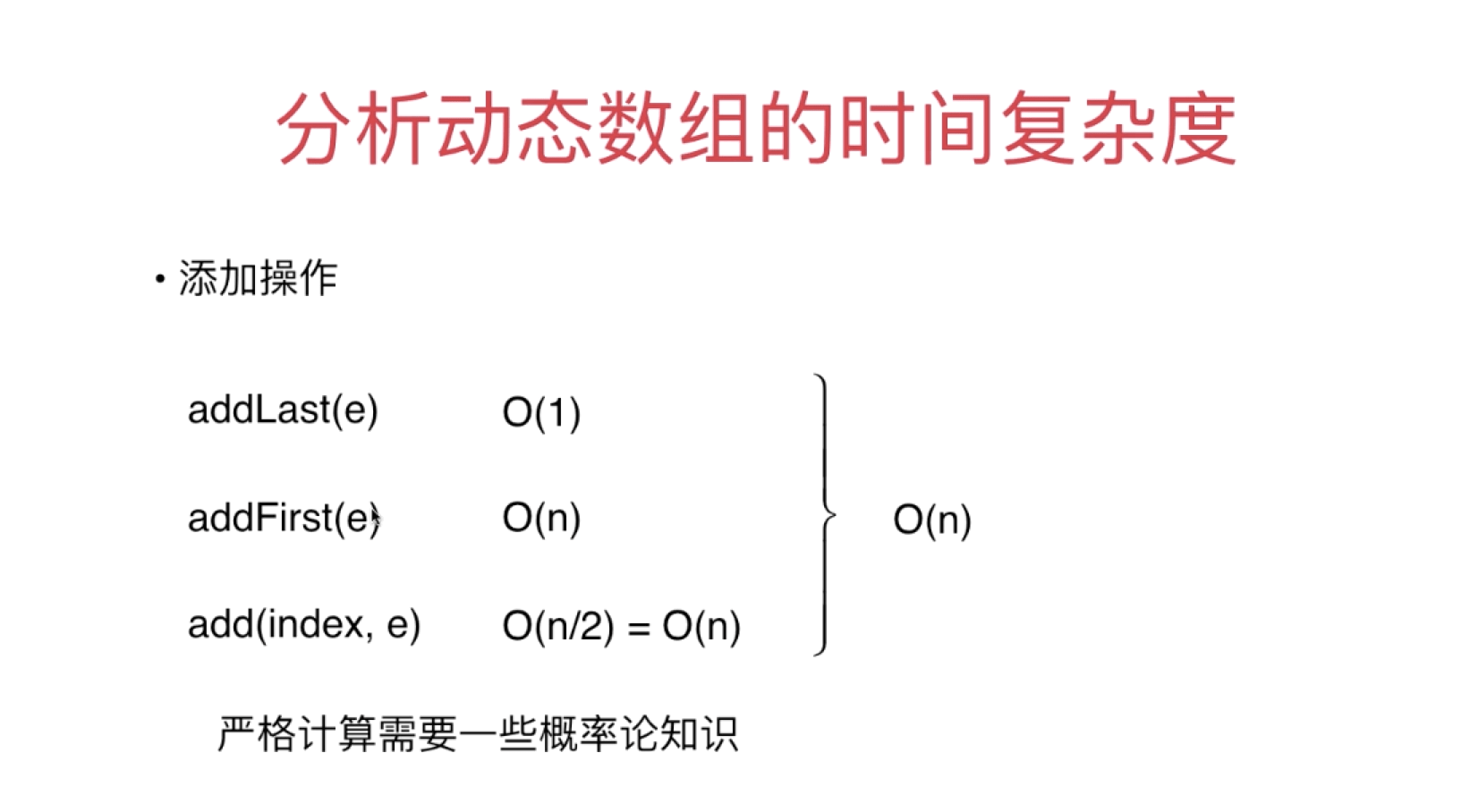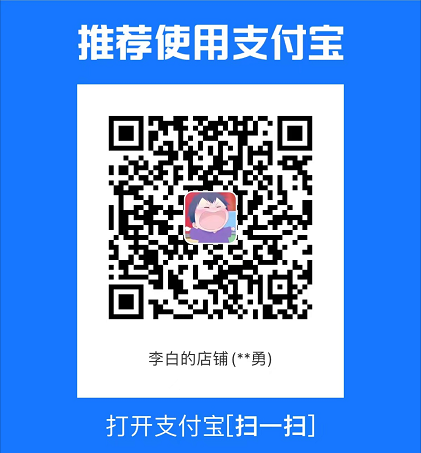1.数组基础
数组最大的优点:快速查询。scores【2】
数组最好应用于“索引有语意”的情况
但并非所有有语意的索引都适用于数组
身份证号:1101031985121666666
数组也可以处理“索引没有语意”情况。
我们在这一章,主要处理“索引没有语意”的情况数组的使用
2.封装我们自己的数组(并且简单的添加元素)
package List;
public class Array {
private int[] data;
private int size;
// 构造函数,传入数组的容量capacity构造Array
public Array(int capacity) {
data = new int[capacity];
size = 0;
}
// 无参数的构造函数,默认数组的容量capacity = 10
public Array() {
this(10);
}
// 获取数组中的元素个数
public int getSize() {
return size;
}
// 获取数组的容量
public int getCapacity() {
return data.length;
}
// 数组是否为空
public boolean isEmpty() {
return size == 0;
}
// 向所有元素后添加一个新元素
public void addLast(int e) {
add(size,e);
}
//在所有元素前添加一个元素
public void addFirst(int e){
add(0,e);
}
// 在第index个位置插入一个新元素e
public void add(int index, int e) {
if (size == data.length)
System.out.println("插入新元素方法失败,数组长度不足!");
if (index < 0 || index > size)
System.out.println("添加新元素方法失败,插入位置不可以为负数,也不可以大于数组长度");
for (int i = size - 1; i >= index; i--)
data[i + 1] = data[i];
data[index] = e;
size++;
}
}
3.为我们的数组添加tostring方法,以及get、set
@Override
public String toString() {
StringBuilder res = new StringBuilder();
res.append(String.format("Array: size = %d , capacity = %d\n", size, data.length));
for (int i = 0; i < size; i++) {
res.append(data[i]);
if (i != size - 1)
res.append(", ");
}
return res.toString();
}
//获取index索引位置的元素
int get(int index){
if (index<0 || index >= size)
System.out.println("传入不合法!");
return data[index];
}
//修改index索引位置的元素为e
void set(int index,int e){
if (index<0 || index >= size)
System.out.println("传入不合法!");
data[index] = e;
} 4.数组中的搜索、删除
// 查找数组中是否有元素e
public boolean contains(int e) {
for (int i = 0; i < size; i++) {
if (data[i] == e)
return true;
}
return false;
}
//查找数组中元素e所在的索引,如果不存在元素e,则返回-1
public int find(int e) {
for (int i = 0; i < size; i++) {
if (data[i] == e)
return i;
}
return -1;
}
//从数组中删除index位置的元素,返回删除的元素
public int remove(int index) {
if (index < 0 || index >= size)
System.out.println("传入不合法!");
int ret = data[index];
for (int i = index + 1; i < size; i++)
data[i - 1] = data[i];
size--;
return ret;
}
// 从数组中删除第一个元素,返回删除的元素
public int removeFirst() {
return remove(0);
}
//从数组中删除最后一个元素,返回删除的元素
public int removeLast() {
return remove(size - 1);
}
// 从数组中删除元素e
public void removeElement(int e) {
int index = find(e);
if (index != -1)
remove(index);
} 我们测试一下
public class Main {
public static void main(String[] args) {
Array arr = new Array(20);
for (int i=0;i<10;i++){
arr.addLast(i);
}
System.out.println(arr);
arr.add(1,100);
System.out.println(arr);
arr.addFirst(-1);
System.out.println(arr);
arr.remove(1);
System.out.println(arr);
arr.removeElement(4);
System.out.println(arr);
}
}
控制台输出
Array: size = 10 , capacity = 20
0, 1, 2, 3, 4, 5, 6, 7, 8, 9
Array: size = 11 , capacity = 20
0, 100, 1, 2, 3, 4, 5, 6, 7, 8, 9
Array: size = 12 , capacity = 20
-1, 0, 100, 1, 2, 3, 4, 5, 6, 7, 8, 9
Array: size = 11 , capacity = 20
-1, 100, 1, 2, 3, 4, 5, 6, 7, 8, 9
Array: size = 10 , capacity = 20
-1, 100, 1, 2, 3, 5, 6, 7, 8, 9
5.泛型类
首先我们现将我们的自定义数组类给改造一下,放出完整改造内容
package List;
import java.util.Objects;
public class Array<E> {
private E[] data;
private int size;
// 构造函数,传入数组的容量capacity构造Array
public Array(int capacity) {
data = (E[]) new Object[capacity];
size = 0;
}
// 无参数的构造函数,默认数组的容量capacity = 10
public Array() {
this(10);
}
// 获取数组中的元素个数
public int getSize() {
return size;
}
// 获取数组的容量
public int getCapacity() {
return data.length;
}
// 数组是否为空
public boolean isEmpty() {
return size == 0;
}
// 向所有元素后添加一个新元素
public void addLast(E e) {
add(size, e);
}
//在所有元素前添加一个元素
public void addFirst(E e) {
add(0, e);
}
// 在第index个位置插入一个新元素e
public void add(int index, E e) {
if (size == data.length)
System.out.println("插入新元素方法失败,数组长度不足!");
if (index < 0 || index > size)
System.out.println("添加新元素方法失败,插入位置不可以为负数,也不可以大于数组长度");
for (int i = size - 1; i >= index; i--)
data[i + 1] = data[i];
data[index] = e;
size++;
}
@Override
public String toString() {
StringBuilder res = new StringBuilder();
res.append(String.format("Array: size = %d , capacity = %d\n", size, data.length));
for (int i = 0; i < size; i++) {
res.append(data[i]);
if (i != size - 1)
res.append(", ");
}
return res.toString();
}
//获取index索引位置的元素
E get(int index) {
if (index < 0 || index >= size)
System.out.println("传入不合法!");
return data[index];
}
//修改index索引位置的元素为e
void set(int index, E e) {
if (index < 0 || index >= size)
System.out.println("传入不合法!");
data[index] = e;
}
// 查找数组中是否有元素e
public boolean contains(E e) {
for (int i = 0; i < size; i++) {
if (data[i].equals(e))
return true;
}
return false;
}
//查找数组中元素e所在的索引,如果不存在元素e,则返回-1
public int find(E e) {
for (int i = 0; i < size; i++) {
if (data[i].equals(e))
return i;
}
return -1;
}
//从数组中删除index位置的元素,返回删除的元素
public E remove(int index) {
if (index < 0 || index >= size)
System.out.println("传入不合法!");
E ret = data[index];
for (int i = index + 1; i < size; i++)
data[i - 1] = data[i];
size--;
data[size] = null; //loitering objects != memory leak
return ret;
}
// 从数组中删除第一个元素,返回删除的元素
public E removeFirst() {
return remove(0);
}
//从数组中删除最后一个元素,返回删除的元素
public E removeLast() {
return remove(size - 1);
}
// 从数组中删除元素e
public void removeElement(E e) {
int index = find(e);
if (index != -1)
remove(index);
}
}
这里需要注意的内容,我这里提一下
// 查找数组中是否有元素e
public boolean contains(E e) {
for (int i = 0; i < size; i++) {
if (data[i].equals(e))
return true;
}
return false;
}
//查找数组中元素e所在的索引,如果不存在元素e,则返回-1
public int find(E e) {
for (int i = 0; i < size; i++) {
if (data[i].equals(e))
return i;
}
return -1;
} //从数组中删除index位置的元素,返回删除的元素
public E remove(int index) {
if (index < 0 || index >= size)
System.out.println("传入不合法!");
E ret = data[index];
for (int i = index + 1; i < size; i++)
data[i - 1] = data[i];
size--;
data[size] = null; //loitering objects != memory leak
return ret;
} 这里注意一个点,就是下面这个类型,是Object,而不是Objects,博主在这里粗心大意,浪费了一些时间!
data = (E[]) new Object[capacity];
接下来测试一个自定义类的操作
package List;
public class Student implements Comparable<Student>{
private String name;
private int score;
public Student(String name, int score) {
this.name = name;
this.score = score;
}
@Override
public boolean equals(Object student){
if (this==student)
return true;
if (student==null)
return false;
if (this.getClass() != student.getClass())
return false;
Student another = (Student) student;
return this.name.toLowerCase().equals(another.name.toLowerCase());
}
@Override
public int compareTo(Student another) {
// if (this.score < another.score)
// return -1;
// else if (this.score == another.score)
// return 0;
// return 1;
return this.score - another.score;
}
@Override
public String toString() {
return "Student{" +
"name='" + name + '\'' +
", score=" + score +
'}';
}
public static void main(String[] args) {
Array<Student> arr = new Array<Student>();
arr.addLast(new Student("大名",100));
arr.addLast(new Student("小猪",50));
arr.addLast(new Student("大猪",80));
System.out.println(arr);
}
}
控制台输出
Array: size = 3 , capacity = 10
Student{name='大名', score=100}, Student{name='小猪', score=50}, Student{name='大猪', score=80}
6.动态数组
// 在第index个位置插入一个新元素e
public void add(int index, E e) {
if (index < 0 || index > size)
System.out.println("添加新元素方法失败,插入位置不可以为负数,也不可以大于数组长度");
if (size == data.length)
resize(2 * data.length);
for (int i = size - 1; i >= index; i--) {
data[i + 1] = data[i];
}
data[index] = e;
size++;
} 关键代码
resize(2 * data.length);
// 扩容两倍
private void resize(int newCapacity) {
E[] newData = (E[]) new Object[newCapacity];
for (int i=0;i<size;i++)
newData[i] = data[i];
data = newData;
} //从数组中删除index位置的元素,返回删除的元素
public E remove(int index) {
if (index < 0 || index >= size)
System.out.println("传入不合法!");
E ret = data[index];
for (int i = index + 1; i < size; i++)
data[i - 1] = data[i];
size--;
data[size] = null; //loitering objects != memory leak
//动态减小数组
if (size == data.length / 2)
resize(data.length / 2);
return ret;
} 关键代码
//动态减小数组
if (size == data.length / 2)
resize(data.length / 2);
7.时间复杂度分析
如下图













总结




在数组满的时候,如果我们再增加一条数据,那么就会扩容2倍,然后我们减小一条数据,那么数组又会缩容为二分之一,这样就会发生复杂度震荡
解决方案
之前我们使用了一种比较激进的处理方案,在数组发生一些变化的时候我们就对数组进行了一次较大的O(n)级别的操作,我们可以使用一种比较懒惰的操作,如果数组中数据的内容为数组长度的四分之一,那么我们再进行缩容操作,这样是一种比较简洁、易修改的操作方案,下面是代码实操例子,也是在我们之前的例子上面操作!
//动态减小数组
if (size == data.length / 4 && data.length / 2 !=0)
resize(data.length / 2); 本文作者为DBC,转载请注明。
